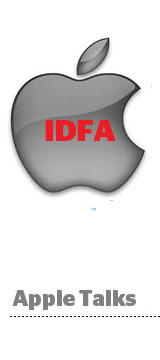 Apple has given its tacit approval for the use of its Identifier for Advertising (IDFA) to attribute app installs and post-install actions. The development, welcomed by app marketers and their ad partners, comes two months after Apple spread fear in the app ecosystem by rejecting some apps that didn’t adhere to a narrow ad serving use case.
Apple has given its tacit approval for the use of its Identifier for Advertising (IDFA) to attribute app installs and post-install actions. The development, welcomed by app marketers and their ad partners, comes two months after Apple spread fear in the app ecosystem by rejecting some apps that didn’t adhere to a narrow ad serving use case.
New language in the iTunes Connect portal for developers spells out three scenarios for the acceptable use of IDFA. Those scenarios are (a) Using IDFA to serve advertisements within an app, (b) using IDFA to attribute installs to a previously served ad, and (c) using IDFA to attribute a post-install action such as X number of launches, a subscription, or an in-app purchase.
The below screen grab shows the page in question, which appears when an app developers submit an app for inclusion in the iTunes App Store (Click to enlarge).
Starting in February, Apple began selectively rejecting certain apps from the App Store when those apps were found to collect IDFA of a device without serving any ads. While the number of documented rejections was limited, the incident sparked an outcry from app marketing startups that had come to rely on IDFA to link conversions back to the ad served. Those parties included large supply sources (Facebook, Twitter), install networks, and pure play attribution vendors (Apsalar).
Because Apple initiated these actions without notifying app owners, and as a rule does not comment publicly on App Store policies, the advertising community was left in the dark about whether Apple had decided to narrow the permissible use of IDFA or change its enforcement policies. That uncertainly has lasted for two months.
Apple’s acknowledgement on Friday of an attribution use case for IDFA signals that it values the role of advertisers in the app economy, according to Craig Palli, chief strategy officer at Fiksu, which supports mobile app installs and analytics.
So did Apple reverse itself? Palli says no.
“If you are of the mindset that Apple did have a formal policy of rejecting any use case other than the publisher-centric use case, then yes it would seem like a reversal,” Palli said. “But for most of us, the advertising identifier is a tool put in place by Apple for both publisher and advertiser use cases. And Apple is trying to improve the communication of this.”
Michael Oiknine, CEO at app measurement firm Apsalar, agrees the significance with Friday’s change is that Apple is finally being clear.
“Clarity is the big win,” he said. “The other big win is for these big networks. Facebook, Twitter, and the other big ad networks that are banking on IDFA for tracking.”
But he added Apple has left some important questions hanging. For instance, can IDFA be used to create segments? To append data to segments? To find mobile audience for programmatic ad buys? The answers to these questions are still unknown.
“Let’s say I am an app, and I’m using IDFA for attribution,” Oiknine said. “But now I’m going to use IDFA to target a specific audience on MoPub or somewhere else. There is an ad served, but not on my app. It will be on that exchange. Is that legal? We still have a few things that aren’t clear.”













